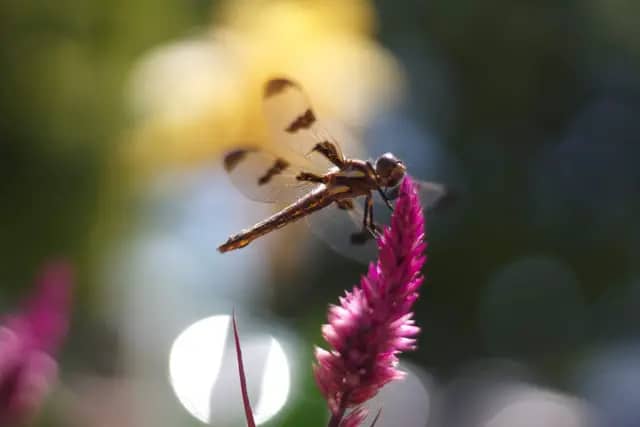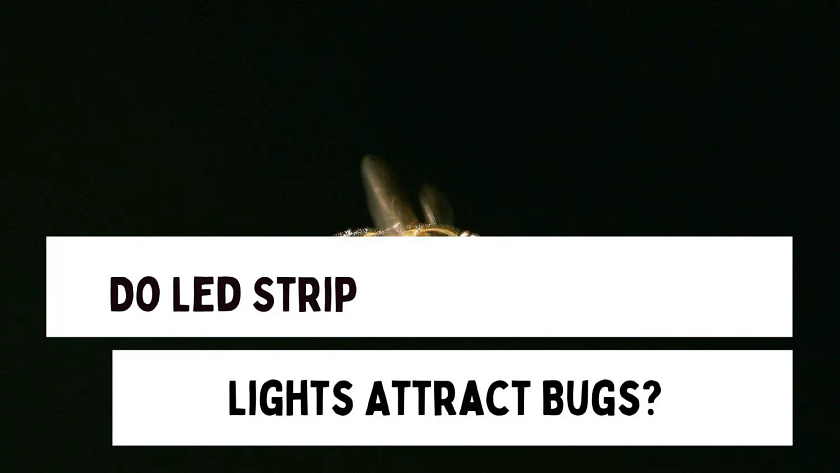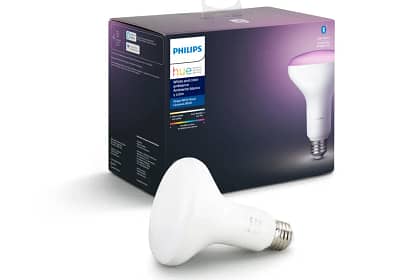I’ve had bugs fly around my lights many times. But I’ve never seen them around my light strips. Have you ever wondered why bugs are attracted to light?
Although you may not see these insects buzzing around your light strips. There is some logic behind this, including color temperature wavelength, and because they are LEDs.
The good news is that LEDs attract fewer bugs compared to traditional lights. So, if these strips are in your home, you may not see any bugs. According to one study, it all boils down to UV lights.
LEDs do not produce UV lights, so they convert their electrical energy into electromagnetic (EM) radiation and waste none on UV and infrared. As a result, bugs are less attracted to LED lights.
Bugs And Color Temperature
Strips Lights give you complete control over their brightness. So if you notice a certain color temperature is attracting bugs, it’s best to stay away from them. Correlated color temperatures (CCT) measure the warmth of light and are calculated in Kelvin.
When we look at color temperatures, we consider three categories that exist: “cool white” (4,000-5,000 K), “neutral white” (~4,000 K), and “warm white” (2,700-3,000 K). A recent 2015 study claims that bugs are equally attracted to the different white colors.
But what about RBG, which consistently forms the strip lights we know today? Luckily for us, the Punjab Agriculture Research Station in Pakistan conducted a study that examined how insects respond to a variety of wavelengths. These include the colors blue, green, yellow, red, black, and white.
In the end, they found that most insects were attracted to the black lights, with the red light being the weakest. The result of the study shows that insects are more attracted to “lights with short wavelengths and high frequencies.”
Have you noticed that the color of LED bug lights is yellow? This is because this color emits a high wavelength of light, which is 550-600 nanometers. If you live in a place where there are a lot of bugs, then have your strip light emit a yellow color.
Why Bugs Are Attracted To Lights?

While this may not affect your indoor light strips, have you noticed bugs flying around your LEDs outdoors? There is no definitive answer. But there are a few theories as to why these insects are attracted to your lights.
One has to do with the moon and its connection to these insects. Insects that are attracted to lights are known to be positively phototactic.
Some believe that insects use them to navigate at night because they are nocturnal, and many are migratory. So, staying on course during their journey, these insects orient themselves to the moon.
This could also explain why certain insects fly wild circles around our lights. Because as soon as they reach the glowing object they think is the moon, they keep drastically changing their angle to the light source.
This movement also explains why they might fly straight into a bug zapper or a fire because they do not expect the light source to be that close.
Or are they attracted to the warmth from light sources? But LEDs are energy-efficient, so they produce way less heat. Another thing to keep in mind: many insects are very good at detecting ultraviolet light.
An ability that many flowers take advantage of by reflecting UV light to attract them. So, positively phototactic insects might target your light strips or bulbs because they instinctively think it’s something they want, like a food source.
Spiders And LED Strip Lights
No LED adhesive strips do not attract spiders and other insects. However, if they get past your lights, they may get stuck there. Naturally, your strips’ adhesive is strong, holding the spiders in place.
While you can find spiders near strip lights, they are not attracted to the lights themselves.
Spiders are often attracted to insects that fly or crawl into the area surrounding the light. When these insects get trapped inside the fixture, they become easy prey for a hungry spider.
Spider leaves behind webs.
Spider webs are not only unpleasant, but they can clog the strips with dust and dirt, decreasing the amount of light they produce.
Therefore, to prevent spiders from sticking to your light strips, it is important to clean the surface if there are webs or bugs.
LED Lights And Bugs Like Silverfish
LED lights do not attract Silverfish bugs. These pests prefer dark places, such as attics and basements. Because Silverfish are nocturnal, they will come out at night to feed on food scraps, paper products, and other items to avoid the light.
The most effective way to get rid of silverfish is by treating the infested area with an insecticide spray that contains pyrethrins or pyrethroids. These chemicals have chrysanthemum flowers that can kill adult silverfish and their eggs.
TikTok LED Lights And Bugs
As more and more people have gotten cozy with staying at home, TikTok’s popularity has skyrocketed—and so, too, have sales of its famous LED light strips, which many use as a backdrop for videos on the app. But these lights might do more than just create your favorite dance moves: they could also attract bugs.
The blue, purple, and pink TikTok light options will probably attract a few more bugs than the white lights. However, that’s not because of the LED light itself, but the wavelength these lights produce. Insect eyesight differs from humans. Most insects have compound eyes that can perceive ultraviolet (UV) wavelengths.
They also have three photoreceptor types: UV, short-wavelength sensitive (SWS), and long-wavelength sensitive (LWS). These photoreceptors allow them to see colors we humans cannot.
In summary, your LED strip lights are less likely to attract bugs. Yet, if you are still afraid, you can always emit a yellow color, lowering your chances of seeing bugs buzzing around your light.
Insects see different wavelengths. They are attracted to short wavelengths of light and are drawn to UV lights the most.






